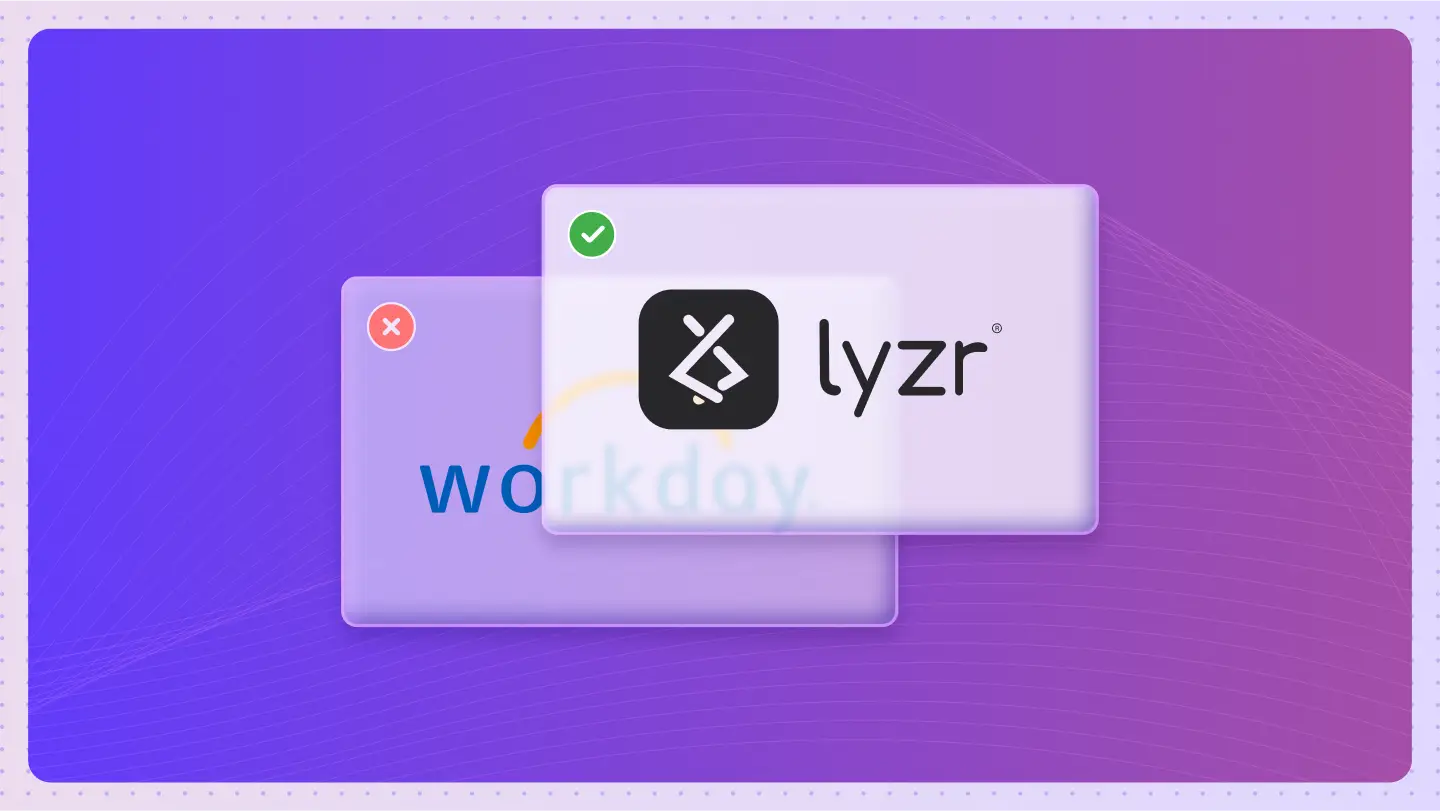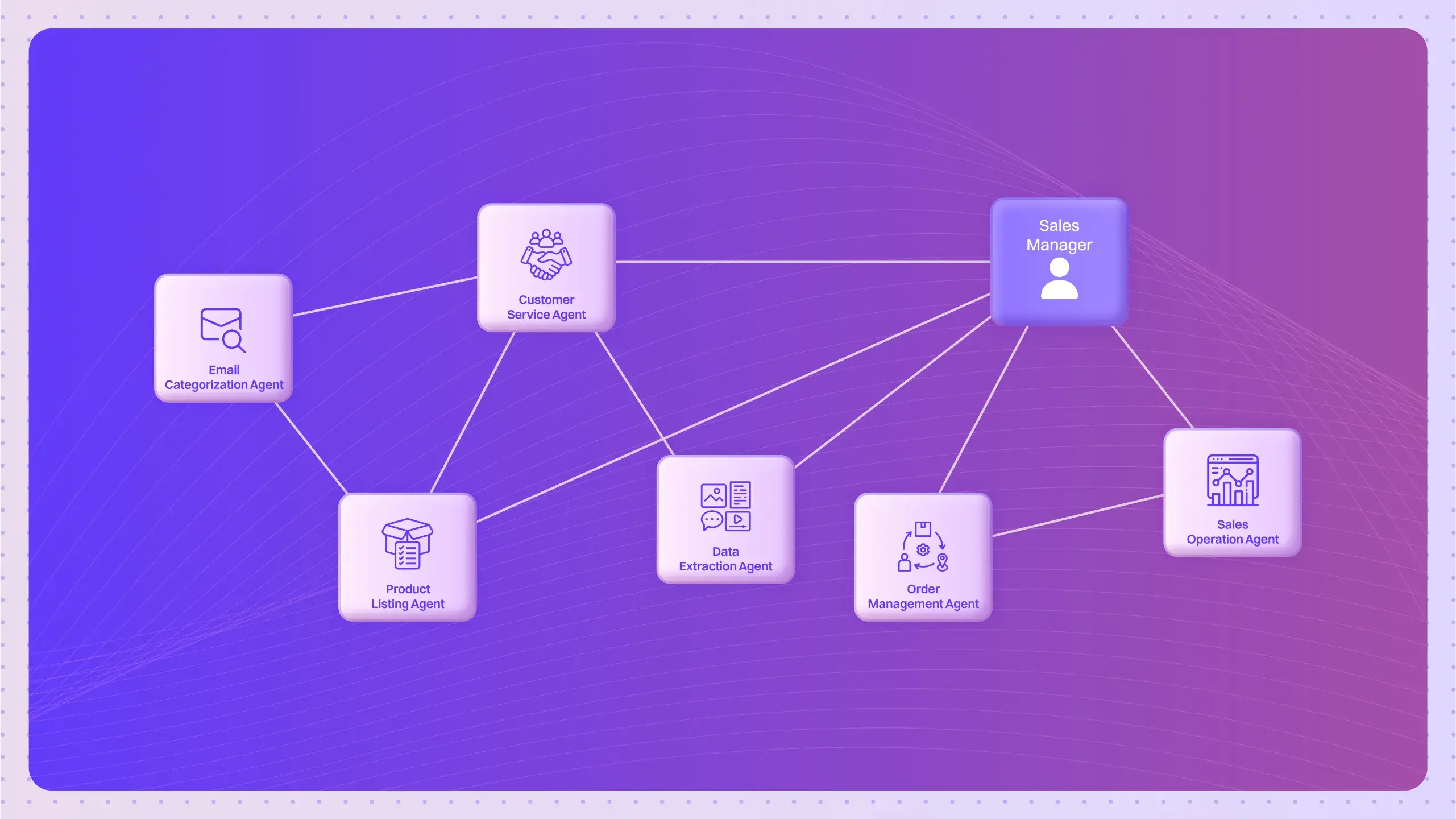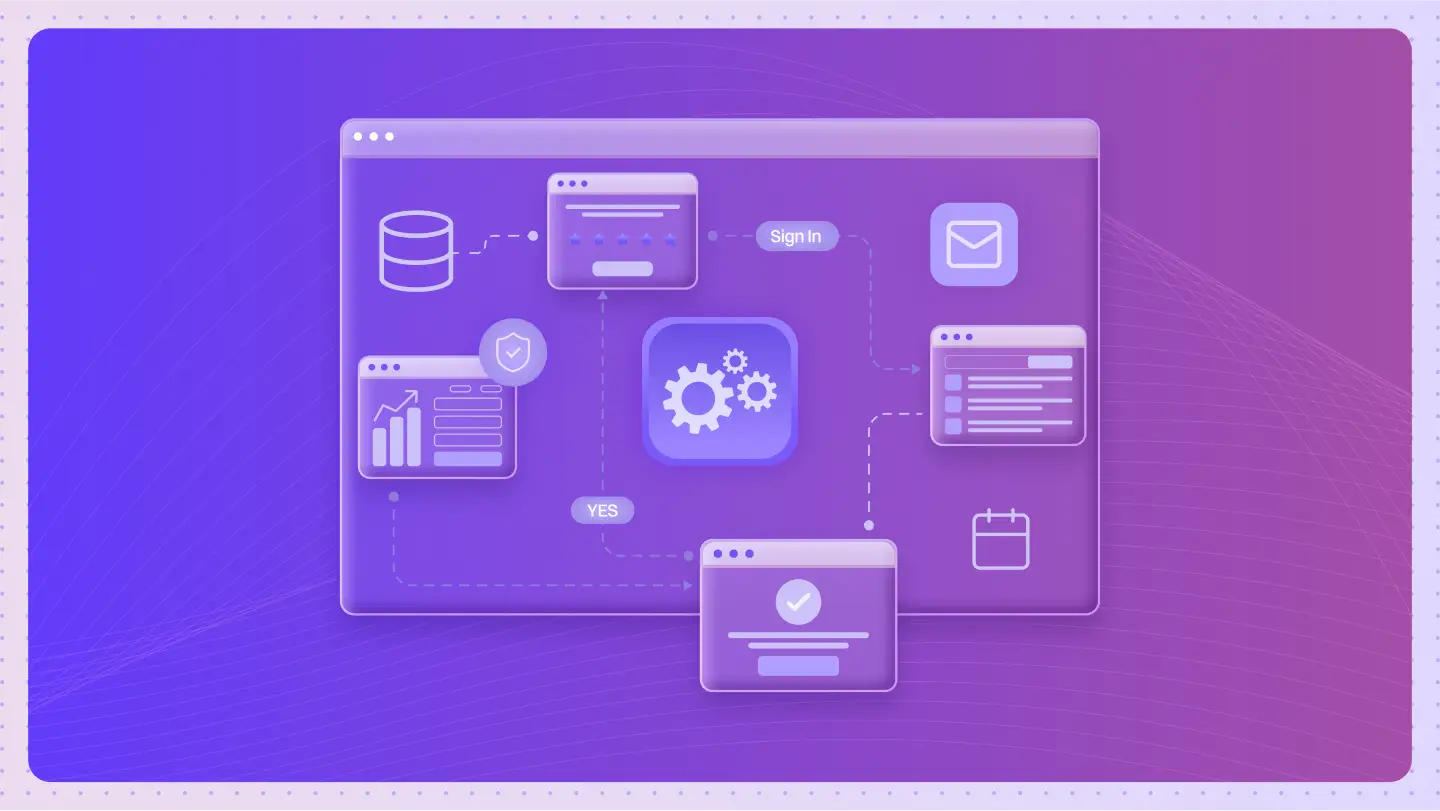What is Fine-Tuning?
Fine-tuning is the process of optimizing a pre-trained model by adjusting its parameters and hyperparameters to improve performance on a specific task. This technique enhances model accuracy and efficiency, making it a vital step in machine learning.
How does Fine-Tuning Enhance Model Performance?
Fine-tuning is a crucial process in machine learning that enhances model performance by optimizing pre-trained models for specific tasks. This technique involves adjusting the model’s weights and hyperparameters to improve its accuracy and efficiency. Here’s how it operates:
- Transfer Learning: Fine-tuning utilizes transfer learning, where a model is first trained on a large dataset and then adapted to a smaller, task-specific dataset.
- Hyperparameter Adjustment: By fine-tuning hyperparameters such as learning rate and batch size, developers can significantly improve model performance.
- Regularization Techniques: Implementing techniques like dropout and weight decay during fine-tuning helps prevent overfitting, ensuring that the model generalizes well to new data.
- Layer Freezing: In some cases, certain layers of the model are frozen (not updated) during fine-tuning, allowing the model to retain learned features while adapting to new data.
- Epochs and Batches: Adjusting the number of epochs and batch sizes during training can lead to better convergence and performance.
By leveraging these techniques, fine-tuning allows machine learning engineers, data scientists, and AI developers to create models that not only perform better but also adapt to specific requirements effectively.
Common Uses and Applications of Fine-Tuning in Real-world Scenarios
Fine-tuning is a critical process in machine learning that enhances model performance by optimizing pre-trained models for specific tasks. It involves adjusting hyperparameters and making necessary modifications to improve accuracy and efficiency. Here are some main applications of fine-tuning:
- Natural Language Processing (NLP): Fine-tuning models like BERT or GPT can drastically improve tasks such as sentiment analysis, translation, and text summarization.
- Computer Vision: Fine-tuning convolutional neural networks (CNNs) aids in tasks like image classification, object detection, and segmentation.
- Speech Recognition: Fine-tuning helps in adapting models for specific accents or languages, enhancing voice recognition systems.
- Recommendation Systems: Fine-tuning algorithms can optimize recommendations based on user behavior and preferences.
- Healthcare Applications: Fine-tuning predictive models can improve diagnostics and treatment recommendations in medical fields.
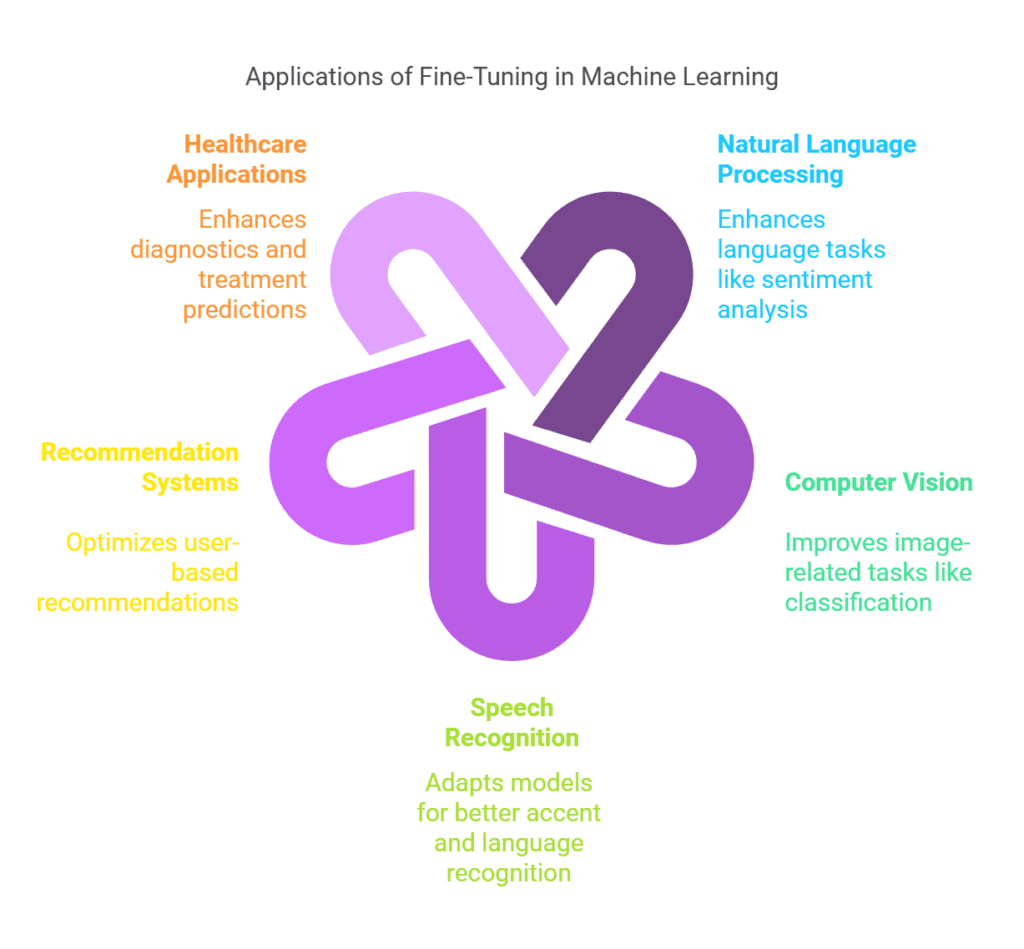
What are the Advantages of Fine-Tuning in ML?
Fine-tuning is a crucial technique in machine learning that significantly enhances model performance through optimization. By adjusting hyperparameters and employing key techniques, fine-tuning allows developers to tailor models for specific tasks, leading to better results. Here are some key benefits of fine-tuning:
- Improves accuracy by refining model predictions.
- Reduces training time compared to training from scratch.
- Enhances generalization to new data, avoiding overfitting.
- Facilitates transfer learning, enabling the use of pre-trained models.
- Optimizes hyperparameters for better performance.
Incorporating fine-tuning into your model development process can yield significant improvements, making it an invaluable tool for machine learning engineers, data scientists, and AI developers.
Are there any Drawbacks or Limitations Associated with Fine-Tuning?
While fine-tuning offers many benefits, it also has limitations such as increased computational cost, potential overfitting, and the need for a large labeled dataset. These challenges can impact model performance, especially if the data is not representative of the task, leading to suboptimal results.
Can You Provide Real-life Examples of Fine-Tuning in Action?
For example, fine-tuning is used by Google in their BERT model to improve natural language understanding tasks. By adjusting the model on specific datasets, they achieved significant improvements in tasks like sentiment analysis. This demonstrates how fine-tuning can lead to better performance on targeted applications.
How does Fine-Tuning Compare to Similar Concepts or Technologies?
Compared to transfer learning, fine-tuning differs in its focus on adapting a pre-trained model to a specific dataset. While transfer learning often involves using a model as-is, fine-tuning allows for adjustments that cater to unique data characteristics, making it more suitable for specialized tasks.
What are the Expected Future Trends for Fine-Tuning?
In the future, fine-tuning is expected to evolve by integrating more automated techniques and better algorithms, allowing for quicker adjustments. These changes could lead to faster deployment of models in various applications, making it more accessible to practitioners.
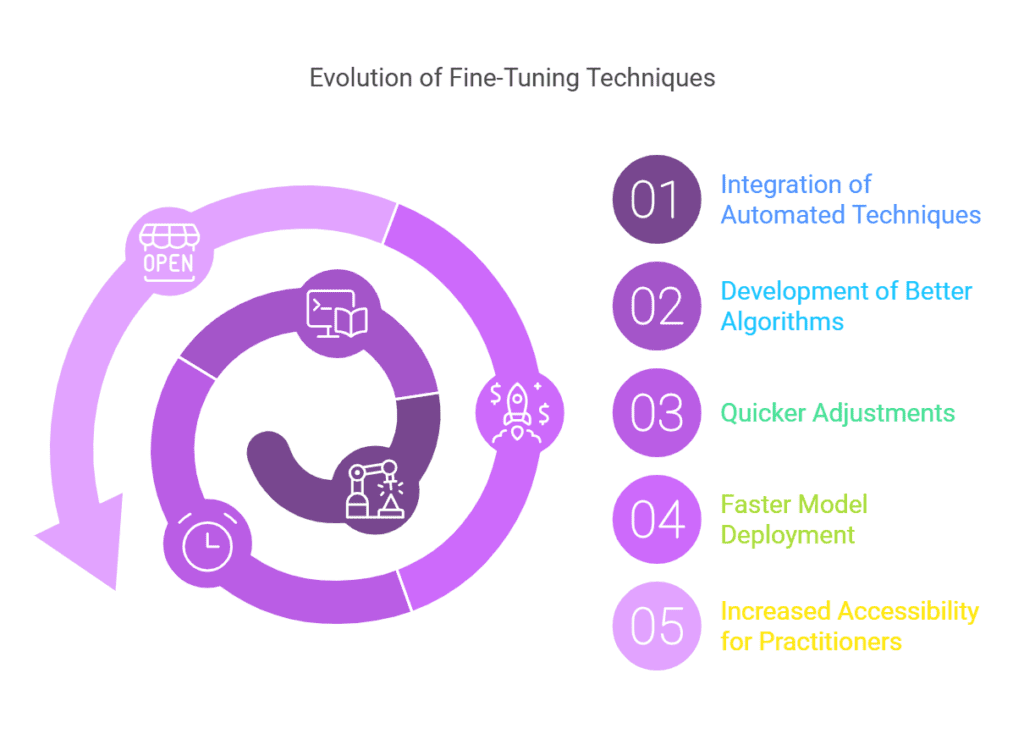
What are the Best Practices for Using Fine-Tuning Effectively?
To use fine-tuning effectively, it is recommended to:
1. Start with a well-pre-trained model.
2. Use a suitable dataset relevant to your task.
3. Adjust hyperparameters carefully.
4. Monitor performance closely to avoid overfitting.
Following these guidelines ensures better model performance tailored to specific needs.
Are there Detailed Case Studies Demonstrating the Successful Implementation of Fine-Tuning?
One notable case study involves OpenAI’s GPT-3 model, which was fine-tuned on specific datasets for applications in chatbots and text generation. The results showed improved context understanding and relevance in generated responses, highlighting the benefits of implementing fine-tuning in complex natural language tasks.
What Related Terms are Important to Understand along with Fine-Tuning?
Related Terms: Related terms include hyperparameter tuning and transfer learning, which are crucial for understanding fine-tuning because they involve optimizing model parameters and adapting models to new tasks, respectively. Understanding these relationships enhances comprehension of fine-tuning’s role in machine learning.
What are the Step-by-step Instructions for Implementing Fine-Tuning?
To implement fine-tuning, follow these steps:
1. Select a pre-trained model relevant to your task.
2. Gather and preprocess your specific dataset.
3. Adjust hyperparameters based on your dataset characteristics.
4. Train the model on your dataset while monitoring performance.
5. Evaluate the model on a validation set.
These steps ensure successful adaptation of the model to your specific needs.
Frequently Asked Questions
Q: What is fine-tuning in machine learning?
A: Fine-tuning is the process of adjusting a pre-trained model on a specific dataset to improve its performance.
1: It helps the model learn from new data,
2: It tailors the model to specific tasks or domains.
Q: How does fine-tuning improve model performance?
A: Fine-tuning improves model performance by optimizing it for specific tasks.
1: It allows the model to adapt to new data distributions,
2: It reduces overfitting by leveraging pre-trained knowledge.
Q: What are hyperparameters in fine-tuning?
A: Hyperparameters are settings that influence how a model is trained.
1: They include learning rate, batch size, and number of epochs,
2: Adjusting them can lead to better model performance.
Q: What techniques are commonly used in fine-tuning?
A: Common techniques include freezing layers, adjusting learning rates, and using different optimizers.
1: Freezing layers helps retain learned features,
2: Adjusting learning rates can speed up convergence.
Q: When should I consider fine-tuning a model?
A: Consider fine-tuning when you have a pre-trained model and a specific task.
1: It is useful for domain-specific applications,
2: It is beneficial when limited data is available.
Q: What are the benefits of fine-tuning?
A: The benefits of fine-tuning include improved accuracy and faster training times.
1: It allows for leveraging existing models,
2: It can reduce the need for extensive training data.
Q: Can fine-tuning be applied to any model?
A: Fine-tuning can be applied to many pre-trained models, but not all.
1: It is most effective with transfer learning,
2: Models designed for specific tasks may require different approaches.



